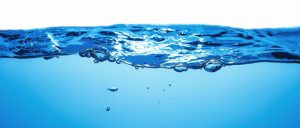
A novel adsorption-based desalination method for water purification that efficiently works with low-grade heat.
Fresh water is an increasingly precious
resource with numerous countries considered to have “extremely high”
water stress levels. Desalination is
a key technology to help mitigate this. However, desalination
processes are not without challenges, including not least relatively
high operational energy costs.
Dr Giulio Santori and his team have
developed a modified adsorption-based desalination method for water
purification, offering increased production efficiency and only needing low-grade heat as a power source. The required low-grade
heat can be readily achievable from renewable sources, or notably by
harnessing the waste heat from other localised industrial processes.
This approach is suitable for domestic, agricultural, and industrial use and ideal for off-grid deployment where solar energy or industrial waste heat is available. Implementing this technology enables accelerated and economic production of clean water where it is most needed.
Application
Fast and cost-effective water purification.
Development Status
Prototype demonstrator and results.
IP Status
UK priority patent application.
Commercial Offering
Commercialisation via Licensing.
Opportunity
Fresh water is essential for sustaining human health, biodiversity, agriculture, and food security. Adsorption Desalination (AD) is one of the primary methods used to meet the global demand for fresh water in areas of natural scarcity, however, modern AD apparatuses are energy-intensive and slow.
To address this, the University of Edinburgh’s researchers have developed a new approach employing existing AD systems that can effectively operate using low-cost heat sources and result in higher purification yields. The Edinburgh technology has the potential to enable the broad use of AD where water desalination is required to satisfy domestic, agricultural, and industrial clean water needs at low cost.
Technology Overview
The method developed by Dr Santori and his research team focuses on operating AD devices with low-grade heat to yield up to a 10-fold increase in clean water when compared with existing operational methods.
This technology deploys a pressure-swing approach to facilitate water purification at low evaporation temperatures. The pressure-swing purification is achieved through reconfiguring the heating mechanism, flow path control, and operational mode of AD devices. The new pressure-swing purification cycle significantly decreases the energy input to evaporation temperatures between 40 - 50 °C reducing costs for energy sourcing. Temperatures of 40 - 50 °C can be easily sourced using flat collectors or solar panels, or through industrial waste heat when available. Implementation of this technology facilitates the production of clean, fresh water where industrial waste heat is available and/or in off-grid and remote locations.
Benefits
Quote: TEC0114245

Senior Technology Transfer Executive
College of Science and Engineering
College of Medicine and Veterinary Medicine